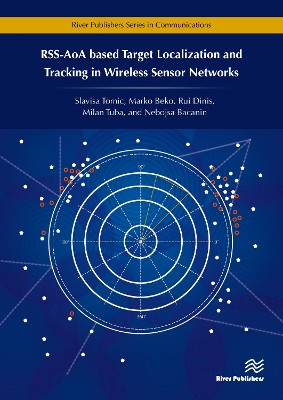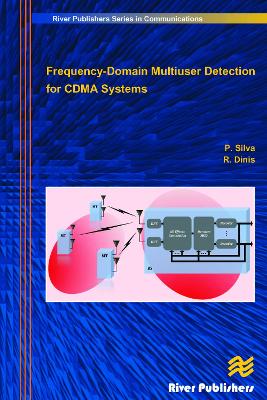River Publishers Series in Communications
2 total works
Rss-Aoa-Based Target Localization and Tracking in Wireless Sensor Networks
by Slavisa Tomic, Marko Beko, Rui Dinis, Milan Tuba, and Nebojsa Bacanin
Published 31 May 2017
The desire for precise knowledge about the location of a moving object at any time instant has motivated a great deal of scientific research recently. This is owing to a steady expansion of the range of enabling devices and technologies, as well as the need for seamless solutions for location-based services. Besides localization accuracy, a common requirement for emerging solutions is that they are cost-abstemious, both in terms of the financial and computational cost. Hence, development of localization strategies from already deployed technologies, e.g., from different terrestrial radio frequency sources is of great practical interest. Amongst other, these include localization strategies based on received signal strength (RSS), time of arrival, angle of arrival (AoA) or a combination of them.
RSS-AoA-based Target Localization and Tracking in Wireless Sensor Networks presents recent advances in developing algorithms for target localization and tracking, reflecting the state-of-the-art algorithms and research achievements in target localization and tracking based on hybrid (RSS-AoA) measurements. Technical topics discussed in the book include:
Centralized RSS-AoA-based Target Localization
Distributed RSS-AoA-based Target Localization
RSS-AoA-based Target Tracking via Maximum A Posteriori Estimator
RSS-AoA-based Target Tracking via Kalman Filter
RSS-AoA-based via Sensor Navigation
This book is of interest for personnel in telecommunications and surveillance industries, military, smart systems, as well as academic staff and postgraduate/research students in telecommunications, signal processing, and non-smooth and convex optimization.
RSS-AoA-based Target Localization and Tracking in Wireless Sensor Networks presents recent advances in developing algorithms for target localization and tracking, reflecting the state-of-the-art algorithms and research achievements in target localization and tracking based on hybrid (RSS-AoA) measurements. Technical topics discussed in the book include:
Centralized RSS-AoA-based Target Localization
Distributed RSS-AoA-based Target Localization
RSS-AoA-based Target Tracking via Maximum A Posteriori Estimator
RSS-AoA-based Target Tracking via Kalman Filter
RSS-AoA-based via Sensor Navigation
This book is of interest for personnel in telecommunications and surveillance industries, military, smart systems, as well as academic staff and postgraduate/research students in telecommunications, signal processing, and non-smooth and convex optimization.
Frequency-Domain Multiuser Detection for CDMA Systems
by Paulo Silva and Rui Dinis
Published 29 February 2012
Future broadband wireless communication systems are expected to be able to offer new and powerful services enabling fast transmission rates of several tens of Mbit/s. This is an ambitious challenge especially for mobile communication systems since these systems should be able to cope with severely time dispersive channels, associated to the signal multipath propagation. Moreover, these systems should have high spectral and power efficiencies, as well as high capacity and flexibility. Spread spectrum techniques, particularly coded division multiple access (CDMA) techniques allow high capacity and flexibility, continuous transmission requiring low-peak power requirements for the amplifiers, as well as some robustness against fading and time-dispersion effects associated with the multipath propagation. When employed in prefix assisted (PA) block transmission schemes combined with frequency-domain receiver implementations they become especially interesting for broadband wireless systems.
In Frequency-Domain Multiuser Detection for CDMA Systems the use of PA block transmission is considered in the context of both DS (Direct Sequence) and MC (Multicarrier) CDMA schemes. The main goal is the study of frequency-domain multiuser detection techniques with iterative signal detection/decoding techniques, also in combination with estimation and cancelation of nonlinear distortion effects. The receiver structures are suitable to scenarios with high interference levels and strongly time-dispersive channels.
In Frequency-Domain Multiuser Detection for CDMA Systems the use of PA block transmission is considered in the context of both DS (Direct Sequence) and MC (Multicarrier) CDMA schemes. The main goal is the study of frequency-domain multiuser detection techniques with iterative signal detection/decoding techniques, also in combination with estimation and cancelation of nonlinear distortion effects. The receiver structures are suitable to scenarios with high interference levels and strongly time-dispersive channels.

